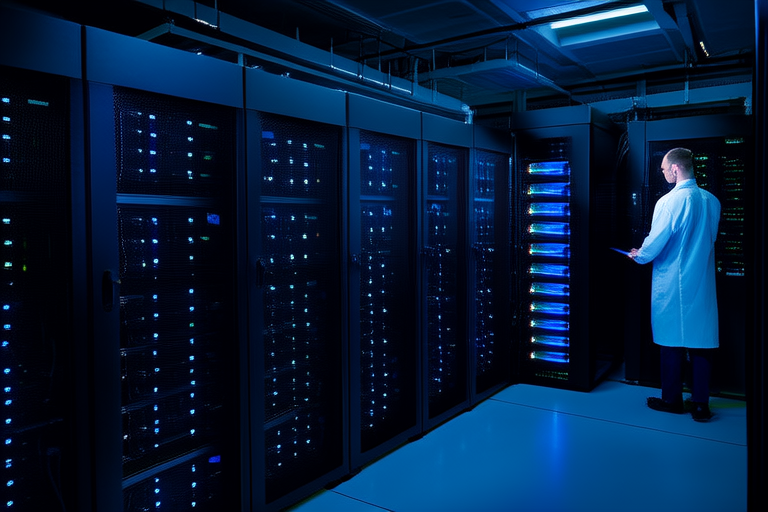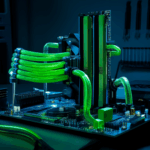“`html
The Synergy Between Cloud Computing and Edge Computing in Modern Tech
Introduction
In today’s rapidly evolving technological landscape, cloud computing and edge computing have emerged as two pivotal forces driving innovation. Cloud computing offers scalable, flexible, and cost-effective solutions by providing access to computing resources over the internet. Meanwhile, edge computing brings processing power closer to the source of data generation, reducing latency and enhancing performance.
The importance of both technologies lies in their ability to address different but complementary needs within modern tech. While cloud computing excels at centralized data storage and complex computations, edge computing is adept at handling real-time data processing and localized tasks. As the demand for efficient, reliable, and secure systems grows, the need for collaboration between these two technologies becomes increasingly apparent.
Understanding Cloud Computing
Definition: Cloud computing refers to the delivery of computing services—such as servers, storage, databases, networking, software, analytics, and intelligence—over the Internet (“the cloud”). These services are provided by third-party providers, allowing businesses and individuals to access a wide range of IT resources without having to invest in physical infrastructure.
Key Components:
– Infrastructure as a Service (IaaS): Provides virtualized computing resources over the internet. Users can rent IT infrastructure on a pay-as-you-go basis.
– Platform as a Service (PaaS): Offers a platform allowing customers to develop, run, and manage applications without the complexity of building and maintaining the infrastructure typically associated with developing and launching an app.
– Software as a Service (SaaS): Provides users with a complete software solution that is managed and delivered entirely over the internet. Examples include email, customer relationship management (CRM) tools, and office productivity suites.
Benefits:
– Scalability: Easily scale up or down based on demand.
– Cost-Effectiveness: Pay only for what you use, reducing upfront costs.
– Accessibility: Access computing resources from anywhere with an internet connection.
Common Use Cases:
– E-commerce platforms.
– Data analytics and big data processing.
– Online gaming and video streaming services.
Understanding Edge Computing
Definition: Edge computing involves processing data closer to where it is generated, rather than sending all data to a central location for processing. This approach minimizes latency and enhances real-time decision-making capabilities.
Key Components:
– Edge Devices: Devices that perform local data processing before sending aggregated or processed data to the cloud.
– Fog Computing: An intermediary layer between the cloud and edge devices, providing additional processing power and storage capacity.
Benefits:
– Reduced Latency: Processing data locally reduces the time taken for data to travel to and from the cloud.
– Improved Data Processing Speed: Local processing allows for faster analysis and action.
– Enhanced Security: By keeping sensitive data closer to the source, edge computing can reduce the risk of data breaches.
Common Use Cases:
– Industrial IoT (IIoT) applications.
– Autonomous vehicles.
– Smart city infrastructure.
The Synergy Between Cloud and Edge Computing
The true power of cloud and edge computing lies in their ability to complement each other. While cloud computing provides robust storage and computational power, edge computing excels at handling real-time data processing and localized tasks. Together, they create a powerful framework for addressing the demands of modern technology.
Integration Challenges and Solutions: Integrating cloud and edge computing requires overcoming several challenges, including ensuring seamless communication between edge devices and the cloud, managing data consistency across distributed systems, and addressing security concerns. Solutions involve implementing robust APIs, using standardized protocols, and leveraging advanced encryption techniques.
Real-World Examples:
– Autonomous Vehicles: Edge computing processes sensor data locally to make immediate decisions, while cloud computing handles long-term planning and learning.
– Smart Cities: Edge devices monitor traffic flow and environmental conditions in real-time, sending critical data to the cloud for broader analysis and optimization.
Hybrid Architectures: Hybrid architectures combine the strengths of both cloud and edge computing, enabling organizations to leverage the best of both worlds. These architectures allow for flexible deployment strategies, optimizing resource allocation and performance.
Future Trends and Implications
The future of cloud and edge computing holds exciting possibilities. Emerging trends include increased adoption of AI and machine learning, greater emphasis on data privacy and security, and the development of more sophisticated edge devices. As these technologies continue to evolve, their integration will become even more seamless and powerful.
Potential Developments:
– Enhanced interoperability between cloud and edge systems.
– More advanced edge devices capable of performing complex computations.
– Increased focus on sustainability and energy efficiency.
Impact on Industries: The synergy between cloud and edge computing will have a profound impact on various industries, particularly those reliant on IoT, autonomous vehicles, and smart cities. For example, in healthcare, real-time patient monitoring combined with cloud-based diagnostics could revolutionize treatment approaches. In manufacturing, predictive maintenance enabled by edge computing can significantly reduce downtime and improve operational efficiency.
Conclusion
The synergy between cloud computing and edge computing is reshaping the modern tech landscape. By understanding and leveraging the unique strengths of each technology, organizations can build more efficient, reliable, and secure systems. As we look to the future, the continued integration of cloud and edge computing promises to unlock new possibilities and drive innovation across industries.
As technology evolves, the potential advancements and opportunities in this field are boundless. The ongoing collaboration between cloud and edge computing will undoubtedly play a crucial role in shaping the future of technology, paving the way for smarter, more connected, and more efficient systems.
“`


